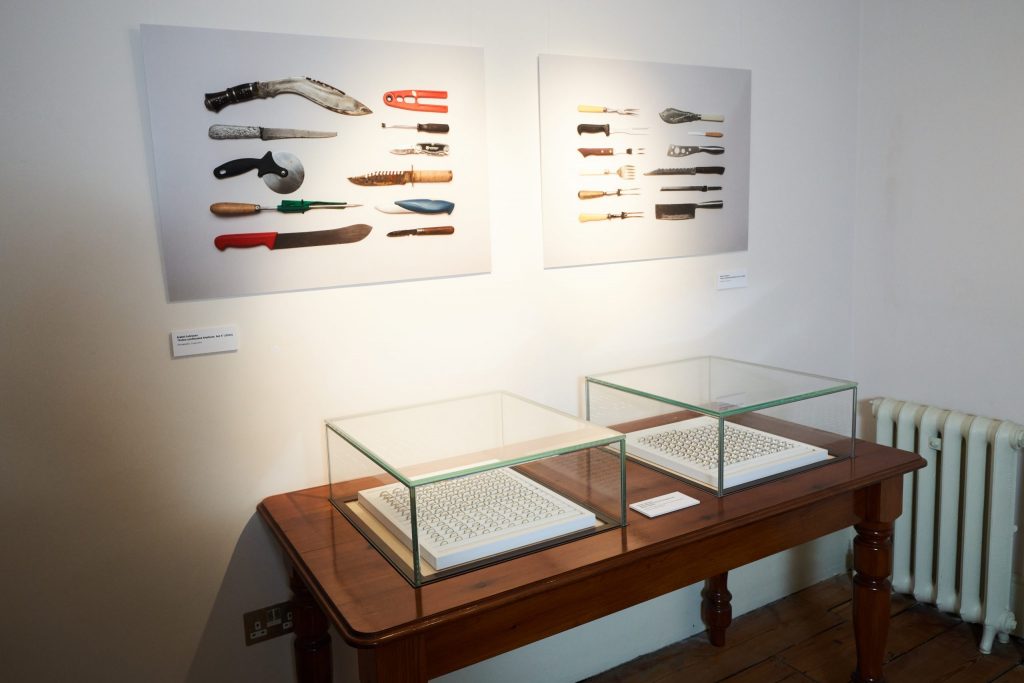Arabel Lebrusan’s solo exhibition titled Blunt Blades depicts perpetual transfiguration of thought into matter, matter into function and function into meaning. The exhibition is composed of stages and stagings of this cycle of transformation where one becomes the other, expanding on to the realms of other realities and personal perspectives.
At the heart of the project lies knife crimes, homicide and self-harm at which an object of domestic use had been reutilised as an offensive weapon, a tool for violence and abuse. Lebrusan employs the method of displacement in her artistic approach as she takes one object from its existing context and moulds it into another object that is indifferent to the former context. She melts three crates of knives that were confiscated – by the police – from people and houses with a crime potential, into stainless steel rings. While doing so, she contemplates on the inheritance of the intrinsic values of knives metamorphosing into rings, exploring the lifespan of object-memory. She collects the leftover dust from the processes of transformation during which knives are sublimated into rings, and uses it to make free associative drawings. She lends herself to the guidance of the sensations that the stainless steel dust generates.
Through association and projection, Lebrusan questions the relationship between bodies and traumatic events. Human body keeps the score of traumas until the individuals under the influence take a conscious attempt for their release. Lebrusan brings forward the quest of similarity between humans and objects in their exposure to traumatic experiences. The drawings and the rings are outcomes of her artistic excavation of inherent meaning. In this regard, the 275 rings exhibited in jewellery display boxes are objects of detournement; they are charged with an intent of transformation and are no longer carriers of a singular function: tool for adornment of bodies. The rings, disguising what they once were, are not sole symbols of a tradition of commitment. Lebrusan continues to add layers of meaning onto the rings, furthering their symbolic value to refer to the number of children, women and men who have been victims of knife crimes. Individually and in group the rings stand for the number of homicides that have taken place in 2020 in England and Wales.
The audio pieces in the exhibition bring forward a personal dimension to the matter in which three women unfold their experiences with knives, from being stabbed by a partner during pregnancy to their hereditary use of knives for self-harm. These narratives bridge the rings back to the knives, placing attention and emphasis on the knives being displayed on the walls of The Higgins Bedford. Those knives, however, are sourced from the archives of the museum, and composed into a group by Lebrusan. In a contrasting manner, those knives no longer cut — like the ones that have transformed into rings and the drawings that collate the residues of knives that were used to cut and separate matter into parts. That is to say, the knives in the exhibition were once tools and now, they are only symbols, objects without any adhered function.
Blunt Blades is an exhibition that poses questions and calls for social awareness, charged with artistic inquiry. Here the method of displacement is employed at its best — objects and contexts fuse into one another while the confluence of the past and the present brings forward a cold awareness, like the surface of stainless steel.
